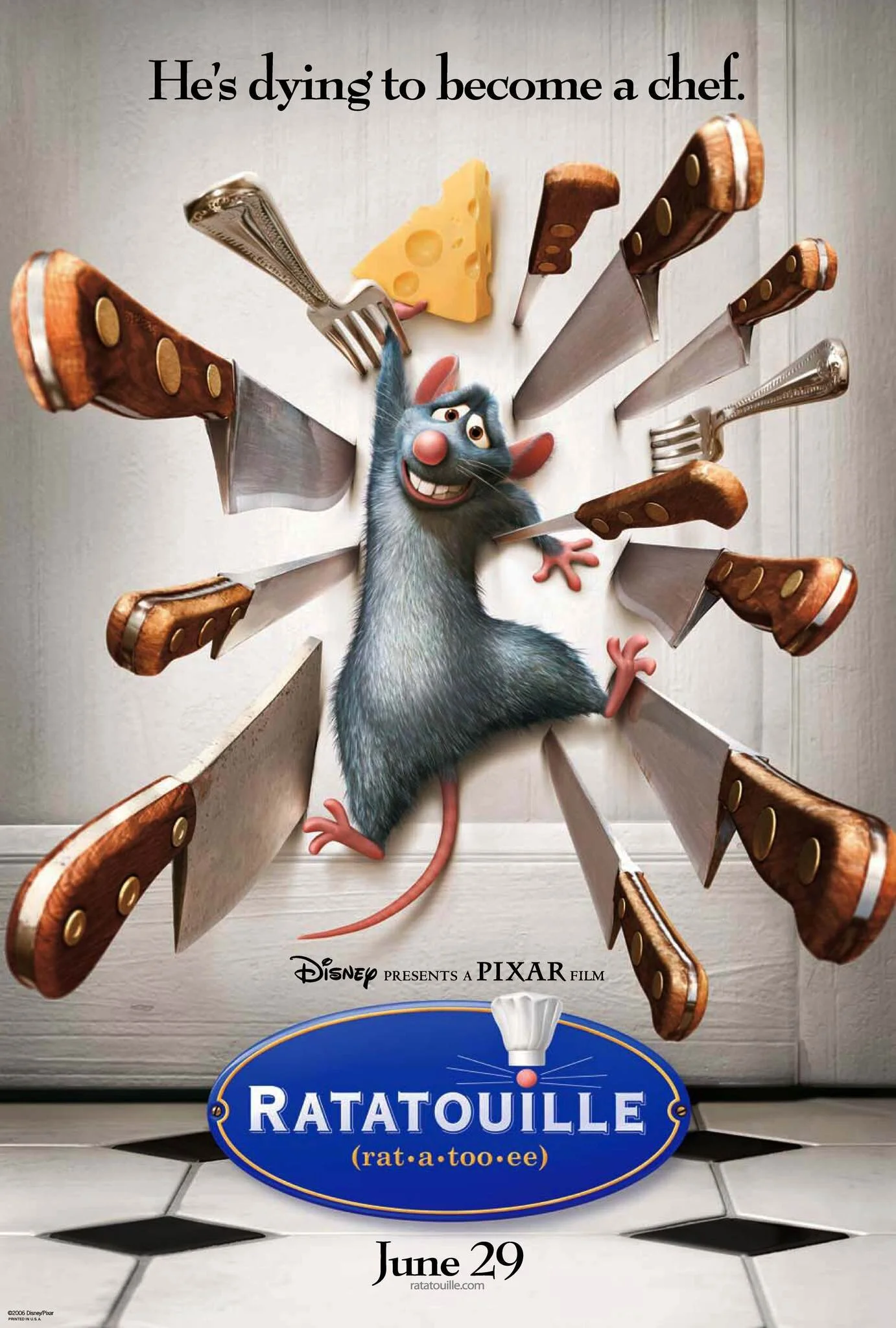WALL-E (2008)
WALL-E
Written by Andrew Stanton & Jim Reardon
Directed by Andrew Stanton
Accompanying Short: Presto
Written & Directed by Doug Sweetland
Just as I admitted to bias against Cars, I need to admit bias FOR WALL-E. Ever since the first time I saw it, I have loved this film. The design, the story, the message…all of it coalesces into a breathtakingly brilliant film.
The climatic moment of Presto
In front of WALL-E is Presto, a short about a magician and his rabbit, and the magical hat they use to wow audiences. I have always loved magic, so this fantastical look “behind the scenes” was immensely enjoyable. Add to this that the short is extraordinarily hilarious, and it’s a winning combination. The lengths that both magician and rabbit go to thwart each other (the rabbit, starving, wants his carrot, while the magician wants to complete the show) is hilariously exaggerated, and the fact that the audience is unaware that anything is amiss is the cherry on top. Presto gets a top grade for being able to showcase heart and emotion without saying a single word.
WALL-E, the most adorable trash compactor you’ll ever meet
Like Presto, WALL-E spends the bulk of its length without dialogue, save for occasional robotic noises. The film focuses on an Earth of the future, a barren wasteland, piled high with trash and debris, which humans have abandoned due to the sheer amount of trash and toxicity. Our hero is WALL-E, the sole remaining cleanup robot, who has somehow achieved sentience in the 700 years since humanity escaped to space. WALL-E goes about his routine, cleaning and stacking trash by day (and collecting interesting (to him) artifacts from the waste), and spending his nights wishing for a companion (thanks to a BRILLIANT use of the 1969 movie-musical Hello, Dolly). His world changes, literally, when one day, he not only discovers a plant, but a sleek new robot, whose directive is to look for plants, that has been delivered to the planet.
EVE and WALL-E, in one of the most gorgeous sequences in the film
WALL-E plays like a modern, dystopian silent film. WALL-E and EVE, the probe, communicate with each other in beeps that border on actual dialogue; for example, EVE asks WALL-E, “Directive?”, but the bulk of their interactions are non-verbal, which is a huge testament to the animation team for being able to bring about emotion into mechanical objects. Much of WALL-E and EVE’s “dialogue” is them simply saying each other’s names (as well as “plant” and “directive”), but the emotions behind it, especially when neither character has a mouth, is incredibly impressive.
WALL-E and two humans, after more than 700 years of not having to lift a finger
The design of the film is amazing. Earth is rendered in tans and browns, reflecting the polar opposite of how we perceive our “blue marble” today. The Axiom, on the other hand, is designed in stark whites and cool blues. The design that is most shocking, however, is the evolution of humans after 700 years of not only being in space, but having robots cater to their every whims, including moving them around: they have become large, gelatinous creatures that resemble smaller versions of the Stay-Puft Marshmallow Man. It’s a daring choice, but one that makes perfect sense within the story.
The Captain of the Axion, arguing with his First Mate
The commentary of the film is perhaps its biggest strength. The films touches on global warming, environmentality, the overabundance of consumerism, and the threats of an increasingly sedentary lifestyle. It forces the audience to think about their participation in the destruction of the planet, and shows an example of what can happen if we refuse to do our parts to help it and each other. It’s a bold message to send, one that could alienate those who believe climate change isn’t real (news flash: IT IS). I’m glad that Pixar doesn’t shy away from having that conversation, or at least inspiring it. The Captain of the Axiom says it best: Earth is our home, and it’s in trouble.
I could go on and on about how brilliant this film is, but suffice it to say that WALL-E challenges the audience to look back at itself in a way that only the best films can do. The film is not just mere escapism (although there are gorgeous sequences that do just that), it has a real and timely message right at its forefront, a message that all of us hurtling through space on our blue marble would do very well to heed before the future depicted here becomes our (and our future generation’s) reality.
SHORT GRADE: A+
FILM GRADE: A+







